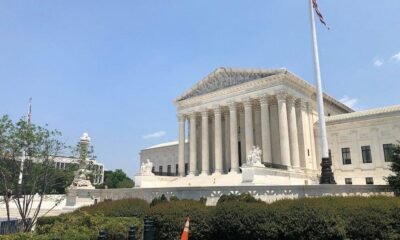Fashion
Supreme Court Overrides Precedent, Grants President Power to Dismiss Independent Officials

A significant ruling by the U.S. Supreme Court in late May 2025 may have far-reaching implications for constitutional law and the structure of the federal government. In what appears to be a technical and procedural decision, the ruling addresses critical questions about presidential authority over independent agencies.
The controversy arose after President Donald Trump dismissed two officials from Biden’s administration: Gwynne Wilcox, of the National Labor Relations Board, and Cathy Harris, from the Merit Systems Protection Board. These agencies, like many others, were created by Congress to operate independently of presidential influence. Their mission is to serve the public interest rather than the whims of the sitting president.
Given their independent status, the law stipulates that a president can only remove leaders from these agencies for “good cause,” which typically involves misconduct or inefficiency. In contrast, other executive branch agencies operate entirely under presidential control, meaning the president can dismiss their leaders at will.
In Trump’s case, the Supreme Court found that his rationale for the firings lacked justification under the statutory requirements. He cited Wilcox’s differing policy preferences as a basis for her termination but provided no reason for Harris’s removal. The broader question became whether Congress has the constitutional authority to constrain a president’s power to dismiss executive branch employees.
This issue traces back to the Constitution itself, which grants the president the power to appoint officials but does not explicitly mention the power to remove them. Under the “unitary executive theory,” some conservative legal scholars argue that the president has complete authority over all executive branch officials, including the right to terminate them. This perspective emphasizes the necessity for the president to have unfettered power to ensure the enforcement of laws.
Critics argue that this view conflicts with the founding principles of checks and balances and the separation of powers established by the framers of the Constitution. The Supreme Court has addressed similar concerns in the past, with pivotal rulings in cases like Myers v. United States (1926) affirming presidential removal powers but later limiting them in Humphrey’s Executor v. United States (1935).
As the judicial landscape has shifted in recent years, recent appointments have led to a reassessment of agency autonomy. In decisions dating back to 2009, the Court has notably weakened the constraints on presidential removal powers for various independent regulatory bodies. This trend raises concerns about the potential for executive overreach.
The Court’s recent decision, delivered without an extensive debate, marked a victory for Trump, allowing him greater leeway in firing officials across independent agencies. This ruling effectively undermines the precedent set by Humphrey’s Executor and could undermine the operations of the National Labor Relations Board and the Merit Systems Protection Board.
Notably, the Court did specify that this ruling does not apply to the Federal Reserve Board, which remains protected from executive interference regarding leadership changes. This exception highlights concerns about economic stability and the implications of unrestrained presidential authority.
In response, Justice Elena Kagan criticized the majority for making a substantial legal shift without the usual deliberative processes, arguing that such actions threaten the integrity of judicial review.
The aftermath of this decision raises pressing questions about the future of independent agencies. As courts grapple with its implications, the continuing developments around Trump’s administration and the status of civil servants may deeply impact federal governance. If the Supreme Court ultimately chooses to further diminish the protections established by Humphrey’s Executor, the ramifications for public interest governance could be significant.


















